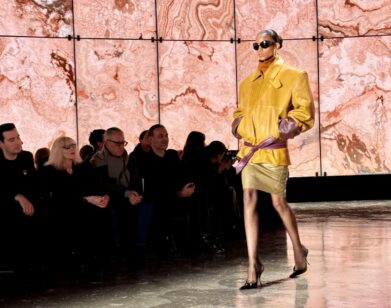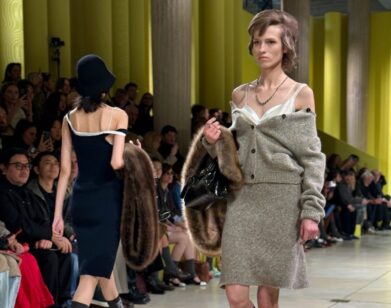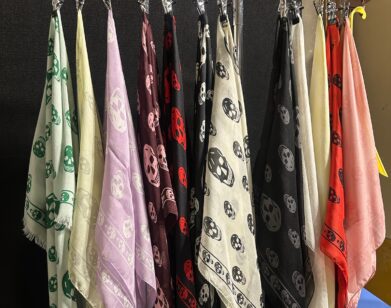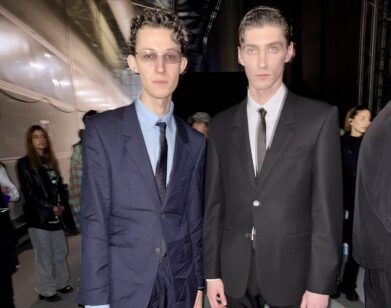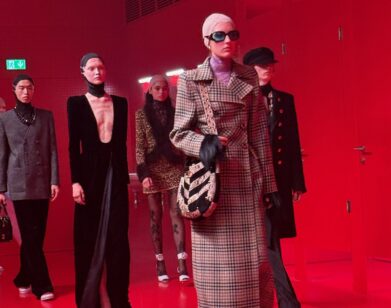Carla Sozzani
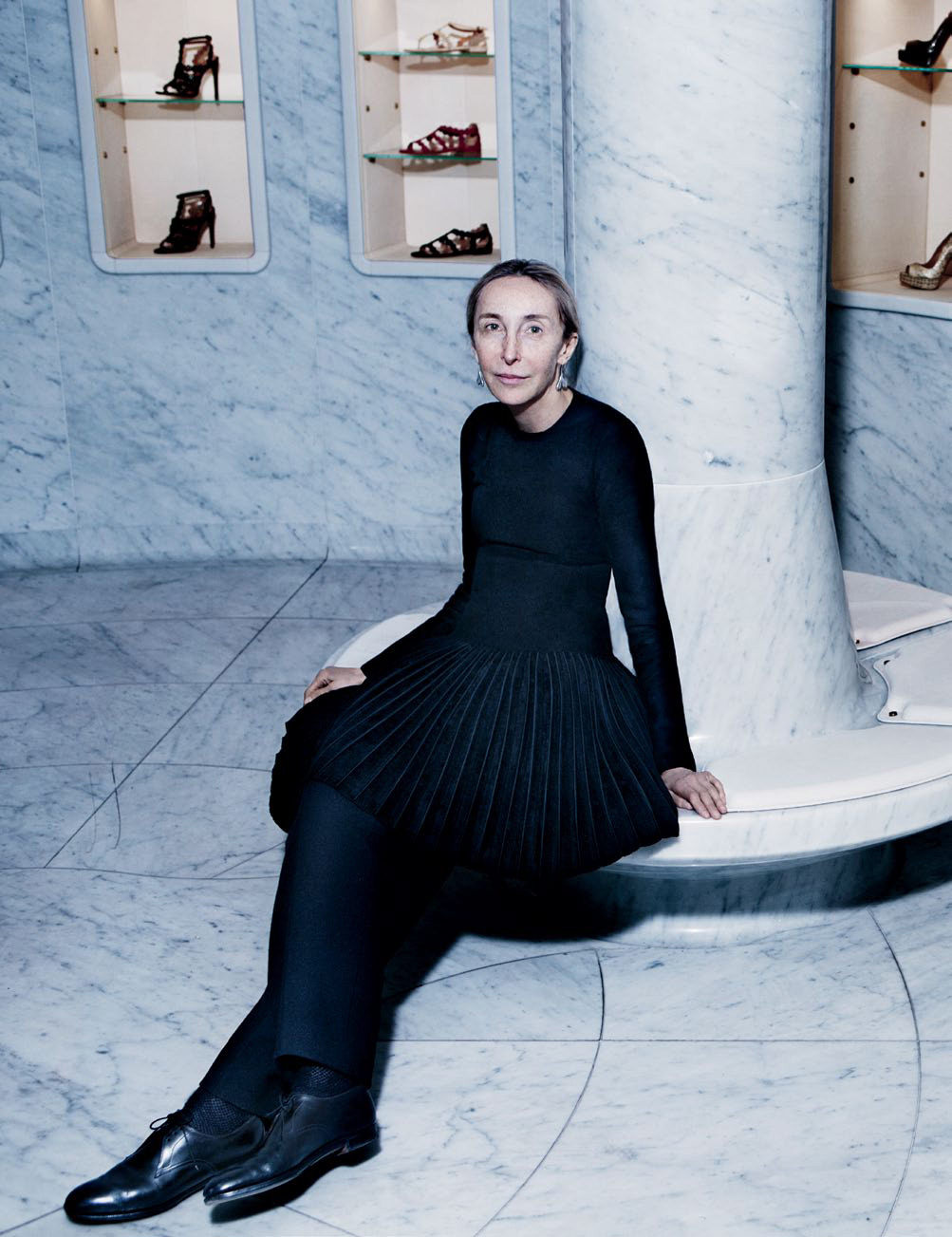
ABOVE: CARLA SOZZANI AT THE ALAIA SHOP, PARIS, JANUARY 2013
I wanted to make a living magazine. I was, for 19 years, a fashion editor, so editing was for me instinctual. It was sharing and getting feedback that I could not get then from magazines.Carla Sozzani
LOCATION: 10 Corso Como in Milan, with locations in Seoul, Tokyo, and, later this year, Shanghai. HISTORY: A longtime fashion editor for magazines such as Italian Elle and Vogue (where her sister, Franca, still serves as editor in chief), Sozzani founded the exhibition space Galleria Carla Sozzani in 1990 in a vacant garage at 10 Corso Como in Milan, eventually expanding to include the café, roof garden, bookstore, fashion and design shop, and hotel that comprises the art-fashion-lifestyle retail concept experience that is 10 Corso Como today; Sozzani has also collaborated with Azzedine Alaïa and Rei Kawakubo, and her gallery has published numerous books and photography catalogs. CURRENT OBSESSION: â??“Lights. We have a new Joe Colombo reissue light that I am really enjoying looking at—and not so willing to sell.” WHERE SHE LIKES TO SHOP: â??“Bookshops. Supermarkets. Flea markets, because the curiosity of discovery—even in front of the most obvious—is exciting. I like to shop always, but not necessarily with the objective of acquisition. It’s nice to shop with the eyes too—in markets, windows, whether we’re talking about small shops in the streets in India, or Seoul, African souks, or Hermès.”
INTERVIEW: In many ways, 10 Corso Como was the first of this new breed of hyper-curated retail concept stores. How did the idea for it first come about?
CARLA SOZZANI: I wanted to make a living magazine. I was, for 19 years, a fashion editor, so editing for me was instinctual, and maybe the only thing I knew then. I unconsciously got into retail without knowing what it meant, driven by the desire to communicate—to share my editing choices with readers who would become visitors and customers. I was sharing and getting feedback that I could not get then from magazines, as the internet and blogs did not exist at the time. Photography had been a big part of my work, and I had also become passionate about collecting, so in 1990, the building at 10 Corso Como was the address where the loft was that became Galleria Carla Sozzani. That was the first stone—and then the bookstore, the café, and the store.
INTERVIEW: What was your vision for the whole thing at the time? What did you want it to be?
SOZZANI: An Italian piazza was my vision—a place where people would come and meet, see an exhibition, browse through books, have a drink, eat, rest, shop. Even today, the best compliment is when someone tells me that they were having a difficult day, and when they came here, they felt better. Though I am not Milanese, but Mantuan and very proud of that—Mantegna, Giulio Romano, and Virgil are from Mantua—Milan is my home, and 10 Corso Como would never have happened without being here. My fascination with New York City in the 1980s pushed me towards this garage at a time when using a garage was completely wrong. The location was in a forgotten neighborhood with fruit shops and hardware stores around us, and the smell of oil and motors—and then I opened a sleek photography gallery, and then a store with no windows and a cement floor, when every other store in Milan had windows on the street and marble floors.
INTERVIEW: How do you go about curating what’s in 10 Corso Como? What are you trying to achieve through the edit each season?
SOZZANI: I cannot please everybody, but it is important to have one eye. This builds a faithful following and, consequently, good clientele. That’s why the conversation—the dialogue with visitors and customers—is so important. I’ve never been driven by what is “in” or what is “out.” Design is also always as important as fashion for me. I always wish for something new to find or old to rediscover.
INTERVIEW: What about in terms of younger or newer designers? What do you look for?
SOZZANI: Individualism is important—having a real voice, not just references. I have great respect for the young designers who want to go their own way and try to be a little entrepreneurial, like Thomas Tait today. In the past, someone I admired from the very beginning—and still do—was Martin Margiela.
INTERVIEW: What are some of your favorite discoveries or events that have happened over the years?
SOZZANI: Twenty-two years of memories . . . They all mix in as a whole: the first Helmut Newton exhibition that we did, with people queuing around the block and crowding the courtyard filled with cars, because at that time the space was still a garage; my collaboration with Rei Kawakubo; the exhibition of Rudi Gernreich with Peggy Moffitt; the exhibitions we’ve done with Annie Leibovitz, Bruce Weber, Steven Meisel; the Courrèges exhibition that we did when the electricity went off in the whole area and we filled the place with candles; the Shiro Kuramata Miss Blanche chair that I refused to sell and still happily enjoy having; [Richard] Avedon spending time in my office and at the restaurant talking and talking; Leni Riefenstahl with Leonardo Mondadori; the conversations with A.G. Fronzoni . . .
INTERVIEW: How do you think the way that people shop has changed? And how do you translate that original idea for 10 Corso Como to e-commerce?
SOZZANI: In the beginning, it was not obvious why I was putting together books and pictures with clothes and jewels, or furniture with shoes and candles. But more and more the attitude that people have toward shopping has gone in this direction. People mix and choose, following an independent point of view: their own. I think more and more today there are two ways to enjoy shopping: the first is the discovery, the feeling of searching and finding, and shopping with the eyes too, using all the senses and enjoying the moment—what I call the “slow shopping” experience; and then the second, of course, is e-commerce, which is contrary to the first but as enjoyable. So I am working on our e-commerce, because I would like to find a way—which has been very difficult—to transfer online the same slow, peaceful environment of the physical 10 Corso Como . . . Still working on it.
INTERVIEW: There are now 10 Corso Comos in Tokyo and Seoul, and you’re planning to open another one later this year in Shanghai. How did you arrive at the decision to expand?
SOZZANI: Asia’s culture has planted its roots all over the world, and also has roots in my personal culture. My first trip to China was in the summer of 1980, when I traveled the country by train. A year earlier, it had been my first time to Tokyo, and I would go again many more times to see and learn more—and not only to visit museums, but also to shop at Yohji Yamamoto and Comme des Garçons. It was my admiration and friendship with Rei Kawakubo that drove me first to bring the 10 Corso Como concept of mixing culture and commerce to Tokyo. With Rei, in 2002, we built a co-branded store, 10 Corso Como Comme des Garçons, and thanks to her vision—and our editing of things together—we introduced the 10 Corso Como concept in a country where this mix did not exist. And then my great appreciation of Asia led me to understand Samsung Cheil’s vision to bring the 10 Corso Como concept to Seoul in 2008 in a uniquely Korean way—which led us to opening another 10 Corso Como in Seoul last year. And then this fall, 10 Corso Como Shanghai will open as a partnership with Trendy International Group and Samsung Cheil. To be able to create a world as a whole, the venue itself is not so important. It can be in an old building or a futuristic glass building. It is more about the possibility to create a browsing itinerary, where everything happens inside, and people can walk around and discover new things, listen to music, have a glass of prosecco, find a pair of shoes. Creatively, with artist Kris Ruhs, we build each of these environments together. These stores are all built on my growing interest for sharing and communicating and mixing different cultures—a pleasure that makes the expansion more than a business venture for me, more than simple pride in this growth.
For more fashion and culture curators, click here.


